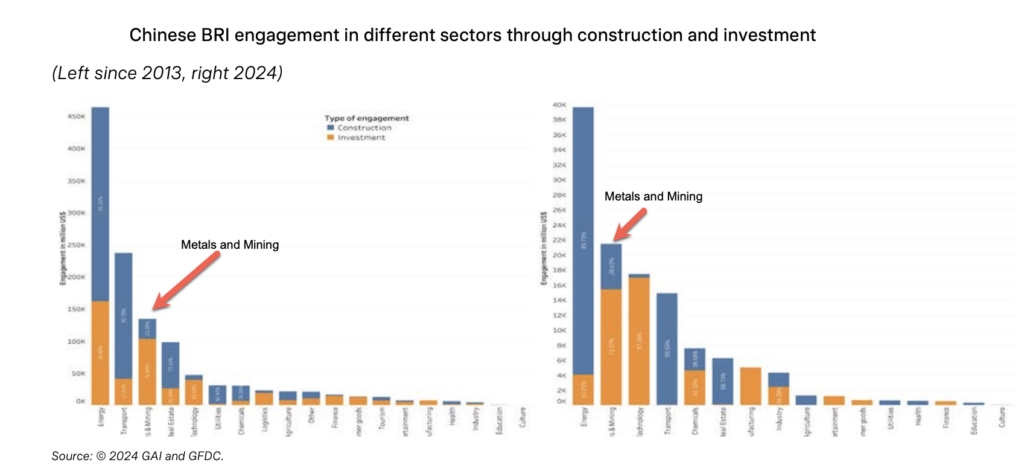China’s overseas mining investment has soared to its highest level in over a decade, driven by Beijing’s push to secure critical raw materials amid rising geopolitical tensions.
There were 10 deals worth more than $100 million in 2024, the most since 2013 according to data from S&P and Mergermarket data, cited by the Financial Times. Separate research from the Griffith Asia Institute found that last year was the most active for Chinese overseas mining investment and construction since at least 2013.
Long the world’s biggest consumer of many strategic resources, China has invested abroad for years to shore up supply. But analysts say this latest wave reflects an urgent shift. Chinese firms are accelerating acquisitions before mounting political resistance in countries like Canada and the United States shuts more doors.
That urgency remains has remained evident this year. Last week, Zijin Mining announced plans to buy the Raygorodok gold mine in Kazakhstan for $1.2 billion.
In April, China’s Baiyin Nonferrous Group acquired the Mineração Vale Verde copper and gold mine in Brazil from Appian for $420 million.
Taken from: China Belt and Road Initiative (BRI) Investment Report 2024. (Click on image to enlarge)
Despite dominating global mineral processing, including lithium, rare earths and cobalt, China still relies heavily on imports of raw materials. Western governments are moving to reduce their dependence on China for these metals and rebuild alternative supply chains for key industries like EV batteries, wind power and semiconductors.
Gold-fuelled buying spree
Surging gold prices have added fuel to Beijing’s mining ambitions. Chinese producers, already the largest gold miners globally, are stepping up overseas deals to compete with Western heavyweights.
One of the most aggressive players is Chifeng Gold. The company, China’s largest non-state-owned gold miner, has ramped up production dramatically. From just two tonnes in 2019, output from its five Chinese mines and two overseas operations — in Ghana and Laos — jumped to 15.2 tonnes in 2023.
 Taken from: China Belt and Road Initiative (BRI) Investment Report 2024. (Click on image to enlarge)
Taken from: China Belt and Road Initiative (BRI) Investment Report 2024. (Click on image to enlarge)
With global production of gold flat-lining near 2018 levels and few major new discoveries, many miners with ageing assets see mergers and acquisitions as their clearest path to growth. Along with China’s CMOC Group, Australia’s Northern Star Resources (ASX: GOR) and South Africa’s Gold Fields (JSE: GFI) have been among the most recent buyers of smaller companies as competition intensifies.














